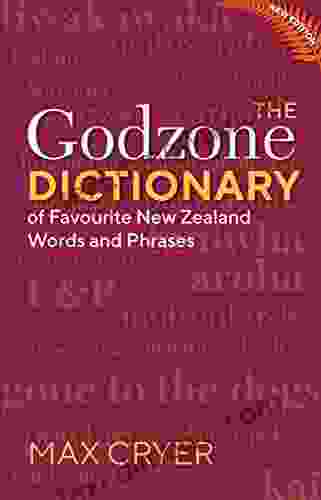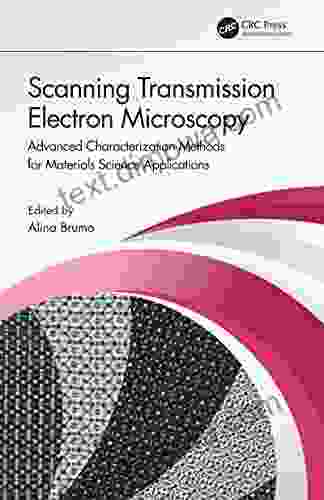Unveiling the Nano-World: Explore the Wonders of Scanning Transmission Electron Microscopy

In the realm of modern science, where exploration delves into the intricacies of matter at the atomic and molecular level, Scanning Transmission Electron Microscopy (STEM) stands as an invaluable tool. This groundbreaking technology empowers researchers and scientists to peer into the very fabric of materials, revealing their composition, structure, and properties with unprecedented clarity.
STEM belongs to the family of transmission electron microscopy (TEM) techniques, which utilize a focused beam of electrons to penetrate and interact with a thin sample. However, STEM distinguishes itself by employing a highly focused electron probe, allowing for detailed imaging of materials at a nanoscale resolution. This ability to zoom into the sub-nanometer range grants scientists deep insights into the structure and behavior of materials at the atomic level.
One of the key applications of STEM lies in its ability to reveal the atomic arrangements within crystalline materials. By varying the beam energy and detection conditions, researchers can selectively highlight specific atoms or elements within the crystal lattice. This enables the detailed characterization of crystal structures, including defect analysis, phase identification, and grain boundary studies.
4.7 out of 5
| Language | : | English |
| File size | : | 12742 KB |
| Text-to-Speech | : | Enabled |
| Screen Reader | : | Supported |
| Enhanced typesetting | : | Enabled |
| Print length | : | 150 pages |
| Hardcover | : | 552 pages |
| Item Weight | : | 2.8 pounds |
| Dimensions | : | 7 x 1.25 x 10.5 inches |
| X-Ray for textbooks | : | Enabled |
Beyond its structural imaging capabilities, STEM also serves as a powerful tool for chemical analysis. Incorporating advanced detectors, such as energy-dispersive X-ray (EDX) spectroscopy, researchers can determine the elemental composition of specific regions within the sample. This allows for the identification and localization of different elements, providing valuable information about material composition and distribution.
Recently, advancements in STEM have expanded its scope into the realm of electronic property characterization. Using techniques such as electron energy loss spectroscopy (EELS) and annular bright-field (ABF) imaging, researchers can probe the electronic states and properties of materials at the nanoscale. This enables the study of band structures, plasmon excitations, and magnetic phenomena.
The applications of STEM extend far beyond the research laboratory, impacting a wide range of fields, including materials science, chemistry, physics, and biology. Here are a few notable examples of its versatility:
- Materials science: STEM enables the study of defects, interfaces, and grain boundaries in materials, contributing to the development of new and improved materials with enhanced properties.
- Chemistry: STEM aids in the characterization of catalytic surfaces, providing insights into reaction mechanisms and helping to design more efficient catalysts.
- Physics: STEM allows for the exploration of magnetic and electronic properties in nanoscale materials, leading to the development of novel devices and applications.
- Biology: STEM imaging techniques can reveal the ultrastructure of biological specimens, providing detailed information about cell organelles, proteins, and viruses.
Scanning Transmission Electron Microscopy has revolutionized the field of materials characterization, offering unparalleled insights into the structure, composition, and properties of materials at the atomic level. Its versatility and ability to probe materials at the nanoscale make STEM an indispensable tool for a wide range of scientific disciplines, from fundamental research to cutting-edge technological advancements.
4.7 out of 5
| Language | : | English |
| File size | : | 12742 KB |
| Text-to-Speech | : | Enabled |
| Screen Reader | : | Supported |
| Enhanced typesetting | : | Enabled |
| Print length | : | 150 pages |
| Hardcover | : | 552 pages |
| Item Weight | : | 2.8 pounds |
| Dimensions | : | 7 x 1.25 x 10.5 inches |
| X-Ray for textbooks | : | Enabled |
Do you want to contribute by writing guest posts on this blog?
Please contact us and send us a resume of previous articles that you have written.
 Book
Book Novel
Novel Page
Page Chapter
Chapter Text
Text Story
Story Genre
Genre Reader
Reader Library
Library Paperback
Paperback E-book
E-book Magazine
Magazine Newspaper
Newspaper Paragraph
Paragraph Sentence
Sentence Bookmark
Bookmark Shelf
Shelf Glossary
Glossary Bibliography
Bibliography Foreword
Foreword Preface
Preface Synopsis
Synopsis Annotation
Annotation Footnote
Footnote Manuscript
Manuscript Scroll
Scroll Codex
Codex Tome
Tome Bestseller
Bestseller Classics
Classics Library card
Library card Narrative
Narrative Biography
Biography Autobiography
Autobiography Memoir
Memoir Reference
Reference Encyclopedia
Encyclopedia Mark My Words
Mark My Words Roy Williams
Roy Williams Wolfgang Rindler
Wolfgang Rindler Paul Wolf
Paul Wolf Md Ziaul Haque
Md Ziaul Haque Mary Wanjiku Gichuhi
Mary Wanjiku Gichuhi Mark Seth Lender
Mark Seth Lender Mariko Tamaki
Mariko Tamaki Nancy Haston Foster
Nancy Haston Foster Rand Richards
Rand Richards Marilyn Nelson
Marilyn Nelson S Jackson Rivera
S Jackson Rivera Mark Quattrocchi
Mark Quattrocchi Maria Yiangou
Maria Yiangou Michael Billington
Michael Billington Marina Budhos
Marina Budhos Mario Biagioli
Mario Biagioli Tim Taxis
Tim Taxis Mary Watson
Mary Watson Michael Bibby
Michael Bibby
Light bulbAdvertise smarter! Our strategic ad space ensures maximum exposure. Reserve your spot today!

 Curtis StewartOf Favourite New Zealand Words and Phrases: A Linguistic Exploration of Kiwi...
Curtis StewartOf Favourite New Zealand Words and Phrases: A Linguistic Exploration of Kiwi...
 Jesus MitchellEscape into the Enchanting World of "The Princess and the Snowbird" and "The...
Jesus MitchellEscape into the Enchanting World of "The Princess and the Snowbird" and "The... Roland HayesFollow ·8.4k
Roland HayesFollow ·8.4k Leo MitchellFollow ·7.4k
Leo MitchellFollow ·7.4k Marc FosterFollow ·14k
Marc FosterFollow ·14k Gage HayesFollow ·5.2k
Gage HayesFollow ·5.2k Aubrey BlairFollow ·9.9k
Aubrey BlairFollow ·9.9k Derrick HughesFollow ·13.3k
Derrick HughesFollow ·13.3k George Bernard ShawFollow ·10.1k
George Bernard ShawFollow ·10.1k Gene PowellFollow ·9k
Gene PowellFollow ·9k

 Boris Pasternak
Boris PasternakThree Walking: An Immersive Journey into the Heart of...
Immerse yourself in the...

 Connor Mitchell
Connor MitchellUnveiling the Secrets of Archery: Discover "Learnt It...
Archery, an...

 Craig Blair
Craig BlairUnveiling the Secrets of Success: Arrogance Millz Day
Are you ready to unlock...

 Damon Hayes
Damon HayesThe Diary and Letters of America's Minister to France...
In the year 1870, as the...

 Hector Blair
Hector BlairCapoeira: A Journey Through History, Culture, and the...
Origins and...
4.7 out of 5
| Language | : | English |
| File size | : | 12742 KB |
| Text-to-Speech | : | Enabled |
| Screen Reader | : | Supported |
| Enhanced typesetting | : | Enabled |
| Print length | : | 150 pages |
| Hardcover | : | 552 pages |
| Item Weight | : | 2.8 pounds |
| Dimensions | : | 7 x 1.25 x 10.5 inches |
| X-Ray for textbooks | : | Enabled |










